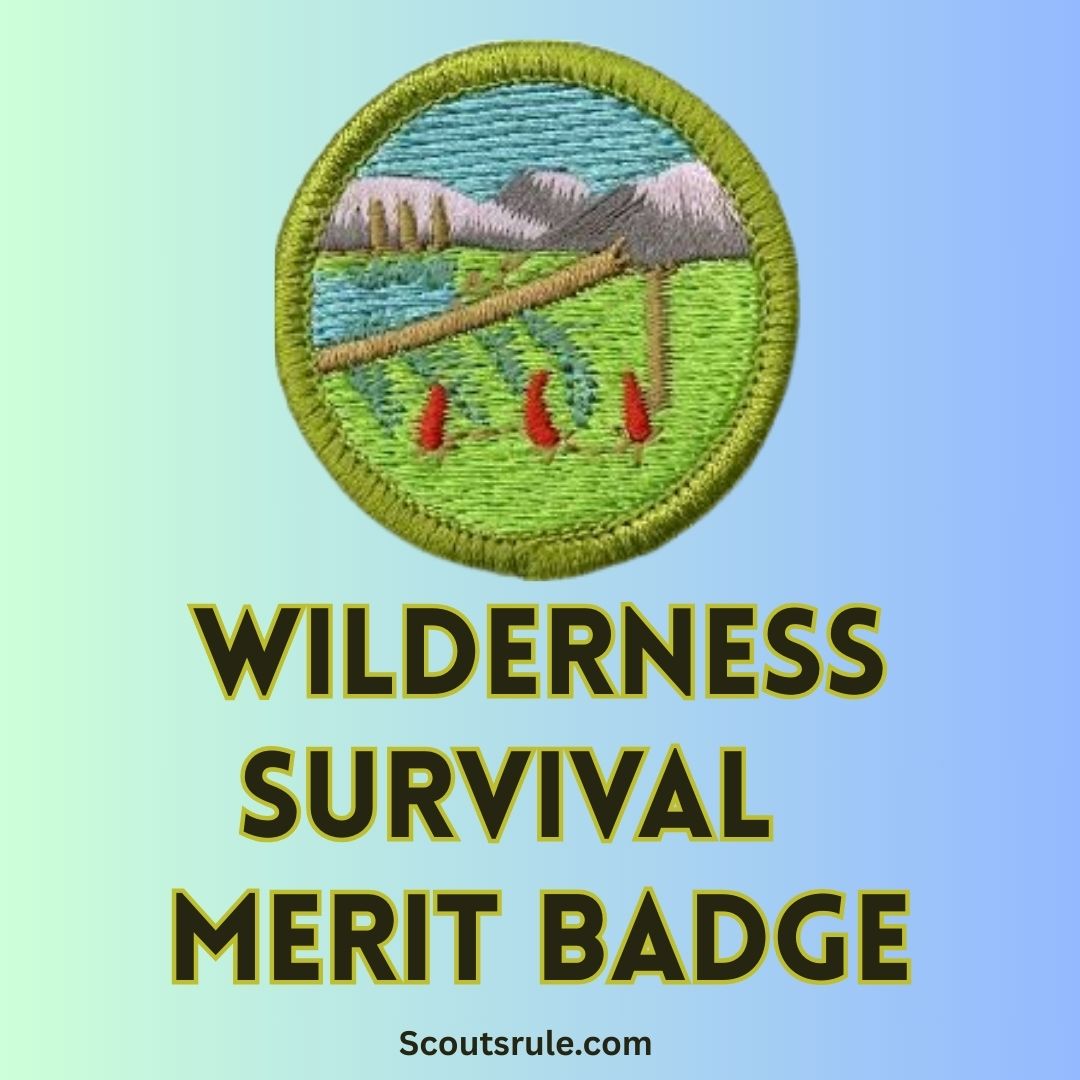
The wilderness can be both awe‑inspiring and dangerous. The Wilderness Survival Merit Badge challenges you to understand how to live safely and effectively in back country settings. By earning this badge, you will learn how to anticipate and mitigate hazards, provide first aid for common injuries and illnesses, and master techniques for surviving extreme weather and environmental conditions. Ultimately, this badge develops your preparedness, resourcefulness, and resilience in wilderness adventures. This guide is designed to serve as a comprehensive resource, addressing key requirements and offering practical tips and examples.
Post Contents
- 1. Recognizing Hazards and Ensuring Safety
- 2. Seven Priorities for Wilderness Survival
- 3. Avoiding Panic and Maintaining Morale
- 4. Surviving Different Exposure Conditions
- 5. Assembling a Personal Survival Kit
- 6. Practical Survival Skills
- 7. Psychological Preparation and Group Morale
- 8. Putting It All Together
- Frequently Asked Questions (FAQs)
- Conclusion
1. Recognizing Hazards and Ensuring Safety
1a. Hazards in Wilderness Survival
When you venture into the wild, several hazards may confront you. It is crucial to understand these potential dangers and know how to deal with them before they become emergencies:
- Wildlife Encounters:
You might encounter bears, snakes, or other wild animals. To mitigate this hazard, store food safely (using bear-resistant containers or by hanging it away from camp) and avoid startling wildlife by maintaining a safe distance. - Severe Weather:
Sudden storms, high winds, rain, or extreme temperatures pose significant threats. Always check weather forecasts before leaving, remain vigilant for weather changes, and have contingency plans (such as shelter locations or temporary cover). - Terrain Challenges:
Rugged landscapes, steep slopes, rocky or uneven ground, and water crossings (rivers or streams) can lead to falls or injuries. Choose your campsite on level ground whenever possible, and be cautious when navigating difficult terrain. - Plant Hazards:
Poisonous plants like poison ivy or other irritants may be present. Learn to recognize these plants and wear protective clothing to minimize contact. - Water-Related Risks:
Inadequate water sources, contaminated water, or even flash floods can be life‑threatening. Know how to find, treat, and safely store water, and observe your surroundings for signs of water hazards. - Fire Hazards:
Wildfires or campfires that get out of control are a real possibility. Learn proper fire‐building techniques and always fully extinguish fires before leaving camp.
Anticipation and Prevention:
By researching your chosen backcountry area, understanding historical weather patterns, and preparing your gear accordingly, you can anticipate many of these hazards. Preventive measures include proper food storage, sturdy and weather‑appropriate clothing, and careful campsite selection.
Mitigation and Response:
If a hazard does arise, having a first‑aid kit and knowing essential safety protocols can mitigate problems significantly. Move to safer ground, signal for help if needed, and apply first‑aid treatments promptly. Always have an escape or emergency plan in place.
1b. First Aid for Wilderness Injuries and Illnesses
A critical component of wilderness survival is knowing how to treat common injuries and illnesses. Your counselor will want to see that you understand first aid methods for the following:
- Hypothermia:
Occurs when your body loses heat faster than it can produce it. Prevention includes dressing in layers and keeping dry. In an emergency, move to shelter, remove wet clothing, and warm the person gradually, using warm liquids if possible. - Heat Reactions (Heat Exhaustion/Heatstroke):
In hot conditions, overexertion can lead to heat exhaustion or heatstroke. Symptoms include dizziness, nausea, and confusion. Prevent by staying hydrated, wearing light clothing, and taking regular breaks in the shade. For treatment, move the person to a cooler area, provide water, and in severe cases (heatstroke) seek immediate medical help. - Frostbite:
Frostbite damages skin and underlying tissues in cold conditions. Prevention involves proper insulated clothing and limited exposure. If frostbite occurs, rewarm the affected area gradually (using warm—not hot—water) and avoid rubbing the area, which could worsen tissue damage. - Dehydration:
This dangerous condition results when the body loses more fluids than it takes in. To prevent dehydration, drink water regularly and monitor the color of your urine. Signs of dehydration include thirst, fatigue, and dizziness. If dehydrated, rehydrate slowly with water and electrolyte solutions. - Blisters:
Caused by friction during long treks, blisters can be prevented by wearing proper footwear and socks, and using moleskin or blister pads. For treatment, keep the affected area clean and, if necessary, cover it with a sterile dressing. - Insect Stings and Tick Bites:
In the wilderness, insects are common. Avoiding bites involves using insect repellent and wearing long sleeves and pants. If stung, remove the stinger (if applicable), clean the area, apply a cold compress, and monitor for allergic reactions. For tick bites, remove the tick carefully using tweezers, clean the bite, and watch for signs of Lyme disease. - Snakebites:
In regions where venomous snakes live, it is essential to know how to react. Stay calm, immobilize the bitten area, and seek emergency help. Do not attempt to suck out the venom or apply tourniquets unless specifically trained to do so.
Being prepared with a robust first‑aid kit and the knowledge to use its contents is essential. Familiarize yourself with local hazards and regularly practice first‑aid drills, so you’re ready in an emergency.
2. Seven Priorities for Wilderness Survival
One essential part of the Wilderness Survival Merit Badge is listing and understanding the seven priorities you should have in a backcountry or wilderness situation. Although different experts might list these somewhat differently, a common set of priorities is:
- Shelter:
Finding or creating shelter protects you from hypothermia, heat stroke, and inclement weather. It is—often—the most immediate priority to conserve body heat and preserve energy. - Water:
Access to clean water is vital. Water is necessary not only for drinking but also for cooking and maintaining one’s hygiene. Make it a priority to locate and secure an uncontaminated water source. - Fire:
Fire provides warmth and allows you to purify water and cook food. Additionally, it is an essential signal for rescuers should you become lost or need help. - Food:
Although food is important, it is ranked lower than shelter, water, and fire. In a crisis, survival time is generally measured in days, so focus on food once the more immediate needs are secured. - First Aid:
Addressing injuries or illnesses is critical, as untreated wounds can lead to infections and other complications. Maintaining health is essential for sustained survival. - Signal:
Being able to communicate your location to rescuers is crucial. Learn signaling methods (such as whistles, mirror signals, or ground-to-air signals) and keep a signal kit as part of your survival gear. - Navigation:
Finally, knowing how to navigate the wilderness is essential if you are lost. This includes understanding how to use a map and compass, or even natural navigation techniques based on the sun, stars, or landmarks.
Each of these priorities plays a key role in survival. If one aspect is lacking, it can compromise the rest. During your discussion with your counselor, be prepared to explain the significance and interaction of these priorities.
3. Avoiding Panic and Maintaining Morale
Panic is one of the most dangerous hazards in any survival situation. Being able to stay calm and maintain morale is essential, because clear thinking can mean the difference between life and death. Some effective ways to avoid panic include:
- Preparation:
Being knowledgeable and well-prepared instills confidence. Familiarize yourself with survival skills, build a personal survival kit, and practice emergency drills. - Mental Rehearsal:
Mentally visualize success in navigating and surviving difficult situations. Maintain a positive outlook, and remember that most survival situations are temporary. - Teamwork:
If you are with others, support each other. Clear communication and cooperation can help alleviate fear. - Focus on Action:
Instead of dwelling on what could go wrong, concentrate on what you can do right now—such as finding shelter or signaling for help.
4. Surviving Different Exposure Conditions
Wilderness survival requires strategies that adapt to varying environmental conditions. Here are guidelines for several distinct exposure scenarios:
4a. Cold and Snowy Conditions
- Shelter:
Build a snow shelter or use a four-season tent. Insulate the ground with leaves or a sleeping pad. - Clothing:
Wear layered clothing, ensuring an inner moisture‑wicking layer, insulation, and a waterproof and windproof outer layer. - Heat:
Build a fire and consume warm, high‑calorie meals to maintain body heat.
4b. Wet Conditions
- Shelter:
Identify areas with good drainage. Set up a tent on elevated ground to avoid flooding. - Gear:
Wear waterproof clothing and boots. Keep electronic devices and important items in waterproof bags. - Fire:
Use dry kindling from beneath wet leaves or find a sheltered area to build a fire.
4c. Hot and Dry Conditions
- Water:
Prioritize locating a water source or carrying sufficient water. - Shelter:
Create shade using a tarp or existing natural features (such as trees or rock overhangs). - Clothing:
Wear light-colored, breathable, and loose-fitting clothes to reduce heat absorption. - Rest:
Schedule strenuous activities during cooler parts of the day.
4d. Windy Conditions
- Shelter and Fire:
Position your shelter in a natural windbreak, such as behind large boulders or clusters of trees. - Clothing:
Secure all lightweight items, and wear clothing that protects against wind chill but remains breathable. - Navigation:
Be cautious when crossing open areas; windy conditions can make navigation more challenging.
4e. At or on the Water
- Watercraft:
Learn basic techniques of using a small boat or raft when necessary. Always wear a life jacket. - Shelter:
If stranded near water, build a shelter on higher ground or use buoyant materials if remaining on the water. - Signaling:
Use brightly colored cloth or signals that are visible from the air, as water can reflect light and confuse rescuers.
5. Assembling a Personal Survival Kit
A personal survival kit is an indispensable component of wilderness survival. Your kit should include items that will help you address your priorities when rescue may be delayed.
Essential Items Include:
- Navigation: Map and compass, or GPS device.
- Water Tools: Water filter or chemical treatment tablets, and collapsible water container.
- Fire Starting Supplies: Waterproof matches, firestarter, or a magnesium fire starter.
- Shelter Materials: A lightweight tarp, emergency blanket, or bivvy sack.
- Food: High‑energy, non-perishable food items such as energy bars, nuts, and dehydrated meals.
- First Aid Kit: Bandages, antiseptic wipes, pain relievers, and any personal medications.
- Signaling Tools: Whistle, mirror, and a brightly colored cloth.
- Multipurpose Tool: A sturdy knife, multitool, or hatchet.
- Extra Clothing: Emergency clothing layers to adapt to changing weather.
- Personal Identification and Emergency Contact Information.
Each item in your survival kit should serve a clear purpose related to the seven priorities (shelter, water, fire, food, first aid, signaling, and navigation). Know how to use every tool in your kit, and review and update your kit before every backcountry trip.
6. Practical Survival Skills
While understanding theory is essential, the Wilderness Survival Merit Badge also requires you to demonstrate practical survival skills. These may include:
- Building an Improvised Shelter:
Use natural materials and a tarp to construct a shelter that protects you from the elements. - Fire Making Without Matches:
Practice methods like using a firesteel, a magnesium block, or even friction‑based techniques (if conditions allow) to create fire in adverse conditions. - Basic Navigation:
Learn to use a map and compass and practice natural navigation techniques (such as using the sun, stars, or landmarks) to find your way. - Water Procurement and Purification:
As already discussed, demonstrate at least two ways to treat water to make it safe for consumption.
Mastering these skills through practice (ideally under the supervision of an experienced leader) builds confidence and prepares you for real‑world survival scenarios.
7. Psychological Preparation and Group Morale
A critical and often overlooked aspect of wilderness survival is mental resilience. In addition to technical skills, you must be prepared psychologically:
- Staying Calm:
Avoid panic by concentrating on immediate actions. Break the situation into manageable tasks. - Maintaining Morale:
Encourage optimism through positive self-talk and, if in a group, bolster one another with collaborative planning and support. - Decision-Making:
Weigh options carefully and trust your training. Document your thought process so you can learn from your experiences. - Leadership:
In group settings, effective leadership is crucial. Designate roles and ensure everyone understands their responsibilities to maintain order and unity.
8. Putting It All Together
In preparing for the Wilderness Survival Merit Badge, you will continuously review both the theoretical aspects of survival and practice hands-on skills. Ensure that you:
- Discuss and Document:
Explain to your merit badge counselor your knowledge on hazards, first‑aid, and survival priorities. - Practice Regularly:
Engage in exercises such as building shelters, starting fires, and navigating an area using a map and compass. - Update Your Survival Kit:
Regularly check that your survival kit is complete and that you know how to use each item. - Reflect on Your Experiences:
Maintain a journal of your practice sessions, reflecting on what went well and what could be improved in future outings.
Taking the Wilderness Survival Merit Badge should not only help you acquire essential outdoor skills but also build your confidence to overcome unexpected challenges in the wild.
Frequently Asked Questions (FAQs)
General Questions
Q: What does the Wilderness Survival Merit Badge cover?
A: It covers the theory and practical application of wilderness survival, including hazard identification, first aid for injuries, survival priorities, managing different environmental conditions (cold, wet, hot, windy, and water), and building a personal survival kit.
Q: Why is learning wilderness survival important?
A: Wilderness survival skills are essential for any outdoor enthusiast. They can help you prevent and respond to emergencies, save lives, and increase your appreciation for nature while ensuring your safety in remote settings.
Q: Is the badge more focused on theory or practical skills?
A: The badge requires a balance of both. You must demonstrate a solid understanding of survival concepts through discussions and written responses, as well as practical skills like building shelters, making fire, and navigating.
Hazards and First Aid
Q: What are some common hazards in the wilderness?
A: Common hazards include severe weather, wildlife encounters, rugged terrain, poisonous plants, and water-related dangers. Learning how to anticipate and mitigate these hazards is a key part of the badge.
Q: How do I prepare for common wilderness injuries?
A: You must understand first aid for hypothermia, heat reactions, frostbite, dehydration, blisters, insect stings, tick bites, and snakebites. Practice using first aid kits and understand when it’s critical to seek professional help.
Survival Priorities and Equipment
Q: What are the seven priorities for wilderness survival?
A: Although definitions may vary, common priorities include shelter, water, fire, food, first aid, signaling, and navigation. Each component plays a crucial role in sustaining life until rescue or self-rescue.
Q: What items should be included in a personal survival kit?
A: A comprehensive kit includes navigation tools (map, compass), water purification methods (filter, chemical tablets), fire starting supplies (matches, firestarter), shelter aids (tarp, emergency blanket), food, first‑aid items, signaling devices, and a multipurpose tool.
Practical Skills and Training
Q: How do I learn practical survival skills?
A: Practice is essential. Attend outdoor survival courses, practice building shelters and fires under supervised conditions, and conduct drills that simulate various backcountry scenarios.
Q: How important is maintaining morale in a survival situation?
A: Mental resilience is critical. Staying calm and maintaining group morale directly impacts your decision-making and overall ability to survive adverse conditions.
Certification and Evaluation
Q: How is the Wilderness Survival Merit Badge evaluated?
A: Your merit badge counselor will evaluate both your knowledge and practical skills. Be prepared to discuss each requirement, demonstrate techniques in a wilderness setting if possible, and document your practice and experiences.
Q: Can I work on this badge with a group?
A: Yes, many of the survival skills are best practiced in groups, which also helps build teamwork. However, ensure you document your personal contributions and understanding.
Conclusion
The Wilderness Survival Merit Badge is not only about surviving in the wild—it is about building self-reliance, teamwork, and respect for nature. By mastering these skills and concepts, you prepare yourself for any unexpected challenges that the wilderness may present.

Hi, Robin here, A former lead Scout and here I share my inspiring stories about USA Scouts, leadership, adventure, how to guides and more.






